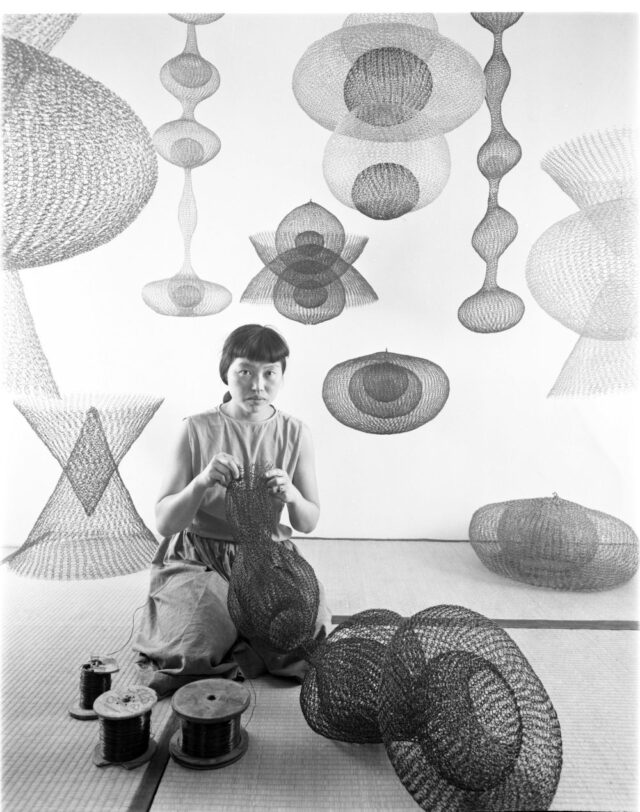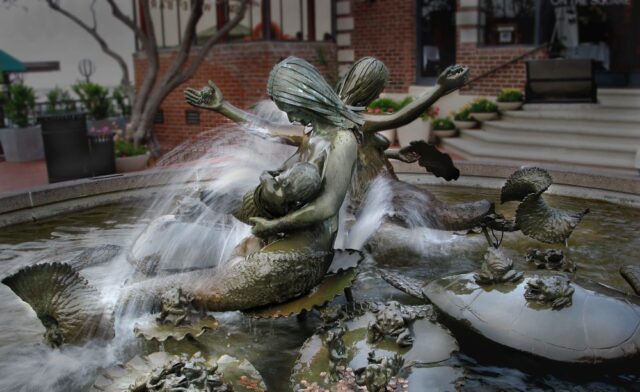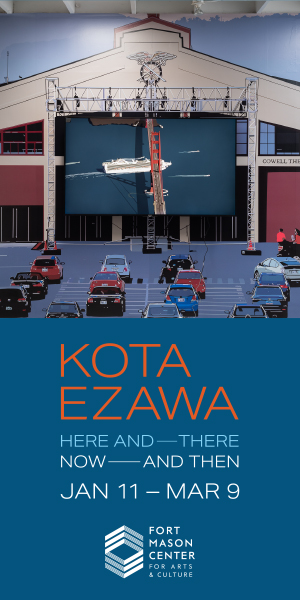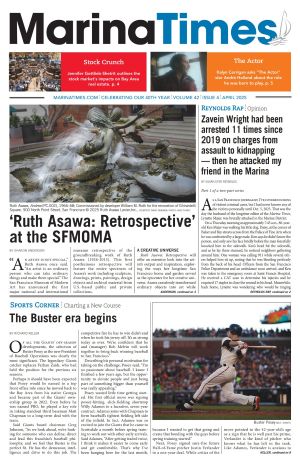“An artist is not special,” Ruth Asawa once said. “An artist is an ordinary person who can take ordinary things and make them special.” The San Francisco Museum of Modern Art has announced the first major national and international museum retrospective of the groundbreaking work of Ruth Asawa (1926-2013). This first posthumous retrospective will feature the entire spectrum of Asawa’s work including sculpture, drawings, prints, paintings, design objects and archival material from U.S.-based public and private collections.
A Creative Universe
Ruth Asawa: Retrospective will offer an extensive look into the artist’s output and inspiration, exploring the ways her longtime San Francisco home and garden served as the epicenter for her creative universe. Asawa ceaselessly transformed ordinary objects into art while seamlessly integrating teaching and advocacy for public art into her practice. Her groundbreaking wire sculptures and deeply experimental works redefined art as a process and a way of being, versus art that has a traditional beginning and end.
Born in Norwalk, California in 1926 and raised on a farm, Asawa possessed an early connection with nature which she drew upon later in her creative process. In 1942, the teenage Asawa and her family were unjustly displaced to incarceration caps, along with many other people of Japanese descent, in the wake of Executive Order 9066 — Franklin D. Roosevelt’s order authorized the Secretary of War to assign areas as military zones “… from which any or all persons may be excluded.”
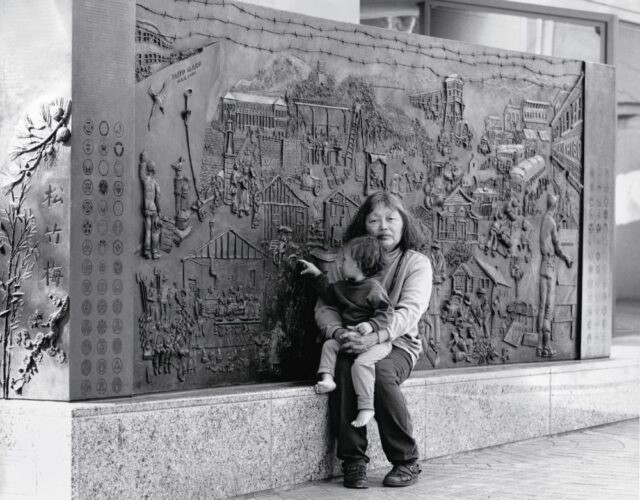
Exclusion came to mean Japanese Americans were moved to internment camps out of racially motivated fear instead of a justifiable military necessity. After the end of World War II, Asawa enrolled in the experimental Black Mountain College near Asheville, North Carolina. Asawa flourished under the tutelage of teachers including Josef Albers, Buckminster Fuller and Max Dehn. In this creative environment she began creating her trademark artworks with undulating lines, repeating patterns and studies of positive and negative space that would resonate in later work. The exhibit features ephemera from Asawa’s 1947 trip to Toluca, Mexico during which she learned a looped-wire technique used for basketry that would help define her sculptural practice.
The San Francisco Years
In 1949 Asawa moved from North Carolina to San Francisco where she would remain for the rest of her life. A gallery devoted to 1950’s San Francisco reveals a decade of tremendous productivity and growth. During this period she created her hanging looped-wire sculptures, with forms within forms and interlocking lobes, no two alike — for which she became known worldwide. In 1962, Asawa received a gift of a desert plant that inspired her next major body of work: tied-wire sculptures, some wall-mounted, some suspended and some displayed on the floor.
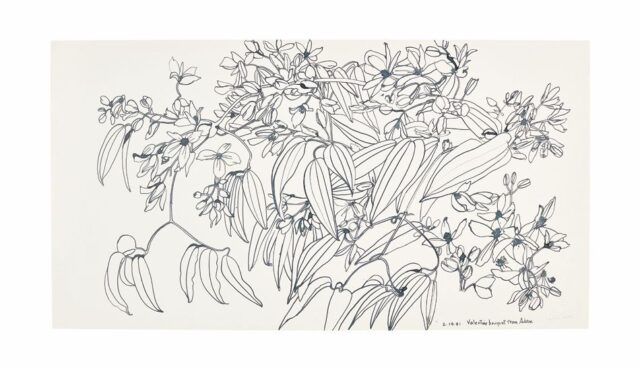
An adjacent gallery will include Asawa’s designs for commercial projects including fabric patterns and wallpaper. All of these forms possess a common continuum of undulating imagery — fabric, wallpaper, wire sculptures — and demonstrate the same evolution influenced by the artist’s love of nature and the methodical organic movement of growth.
Noe Valley Home Recreated
Ruth Asawa: Retrospective will feature a gallery evoking the Noe Valley home and studio that was the hub of the artist’s creative and family life for more than half a century, from the early 1960s until her passing in 2013. A grouping of wire sculptures of various forms and sizes that Asawa is known to have hung from the rafters of her home will be shown together as well as a selection of the artist’s sketchbooks and examples of her material experiments in clay, copper, electroplating and bronze. Highlights of the space include Asawa’s original hand-carved redwood doors from the house and works she displayed by other artists, including Josef Albers, Ray Johnson, Peggy Tolk-Watkins and Marguerite Wildernhain.
A Life Entwined
Ruth Asawa’s art was inseparable from her attitude toward art advocacy and public sculpture practices from the 1960s forward. Asawa was dedicated to arts education and emphasized that it was essential to learn by doing. As a longtime member of the San Francisco Arts Commission, she was instrumental in developing the San Francisco School of the Arts, a public high school that opened in 1982.
In her retrospective, video, photographs, maquettes and archival materials will illuminate Asawa’s public art, including fountains at San Francisco’s Ghirardelli Square (Andrea, 1968) and Union Square (San Francisco Fountain, 1973). Janet Bishop, co-curator, said, “Not only was Asawa an exceptionally talented artist — among the most distinguished sculptors of the 20th century and major contributor in so many other mediums — but she lived her values in everything she did, modeling the importance of the arts and opening up creative opportunities for others at every turn.”
“Ruth Asawa: Retrospective” is exhibiting April 5 – Sept. 2 at the San Francisco Museum of Modern Art, 151 Third Street.
Sharon Anderson is an artist and writer in Southern California. She can be reached at mindtheimage.com
